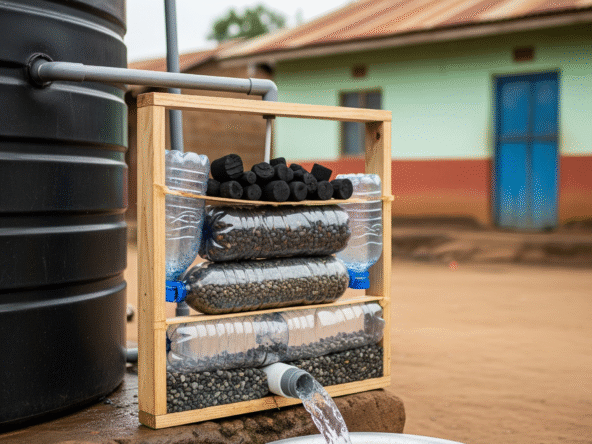Across Kenya, access to a stable water supply is a growing concern especially in peri-urban and rural plots. Whether you’re building in Kitengela, Kahawa Sukari, or Meru, the right water tank helps you store, conserve, and access water reliably.
This detailed guide covers water tank sizing, materials, costs (including the Kentank 5000 litres price), and setup tips for lasting water security.
1. Key Considerations Before Buying a Water Tank
Before selecting between a slimline water tank, a 275 gallon IBC tank, or a 5000 litre round tank, ask yourself:
- What is your average daily water use?
- Is water pumped from a borehole, harvested from the roof, or delivered?
- Do you prefer above-ground or underground storage?
- Will you rely on gravity-fed systems or install a pump?
If unsure, use this guide: How to Size Your Water Tank Based on Household Use
2. Popular Water Tank Sizes and Pricing in Kenya
| Tank Size | Household Type | Brand Examples | Approx. Price (KSh) |
|---|---|---|---|
| 500 litres | Single person | Kentank, Jojo | 4,000 – 6,000 |
| 1000 litres | Small household | Kentank | 8,000 – 10,000 |
| 2000 litres | Medium household | Toptank | 13,000 – 16,000 |
| 5000 litres | Large household | Kentank | 24,000 – 28,000 |
| 10000 litres | High-demand homes/farms | Kentank | 45,000 – 55,000 |
If you need space-saving or moveable tanks, options like IBC Tanks are ideal.
3. Types of Water Tanks: Which One Suits You?
a) Polyethylene (Plastic) Tanks
Kenya’s most common tanks due to:
- Low cost and lightweight design
- Wide availability from trusted brands like Kentank, Toptank, Roto
- UV-stabilized material for outdoor use
Compare options here: Top Water Tank Brands in Kenya
b) Steel & Stainless Steel Tanks
- Ideal for long-term durability
- Common in high-heat areas or where tank life is critical
- Often paired with pressurized systems
c) IBC Tanks
- Best for secondary storage, farm irrigation, or terrace setups
- Capacity usually ranges from 275 gallons (1,000+ litres)
4. Installation Tips and Add-Ons for Longevity
To maximize your tank investment:
- Place the tank on a level concrete base
- Add a shelter or cage to prevent theft, heat, and damage (see guide)
- Use float switches for auto shut-off/refill (view automation guide)
- Harvest rainwater via gutters with mesh filters (Rainwater Harvesting in Kenya)
Planning for underground use or site grading? Read: Construction Site Drainage Planning
5. Where to Buy Water Tanks in Kenya
You can purchase tanks and accessories through:
- Local hardware shops (Nairobi, Nakuru, Kisumu, Eldoret)
- Authorized Kentank or Roto dealers
- Agrovet stores (especially for farm-size stock tanks)
- E-commerce platforms: Copia, Jumia, Kilimall
Ask for bundles that include tanks + pumps, filter systems, or steel tank stands for savings.
Choosing a water tank isn’t just about volume it’s about value, durability, and setup. Whether you’re buying a 500 litre tank for light use or a 10,000 litre underground system, follow these rules:
- Size it based on actual needs
- Buy from a reputable brand
- Install it securely
- Add automation and protection for peace of mind
Related Resources to Explore:


